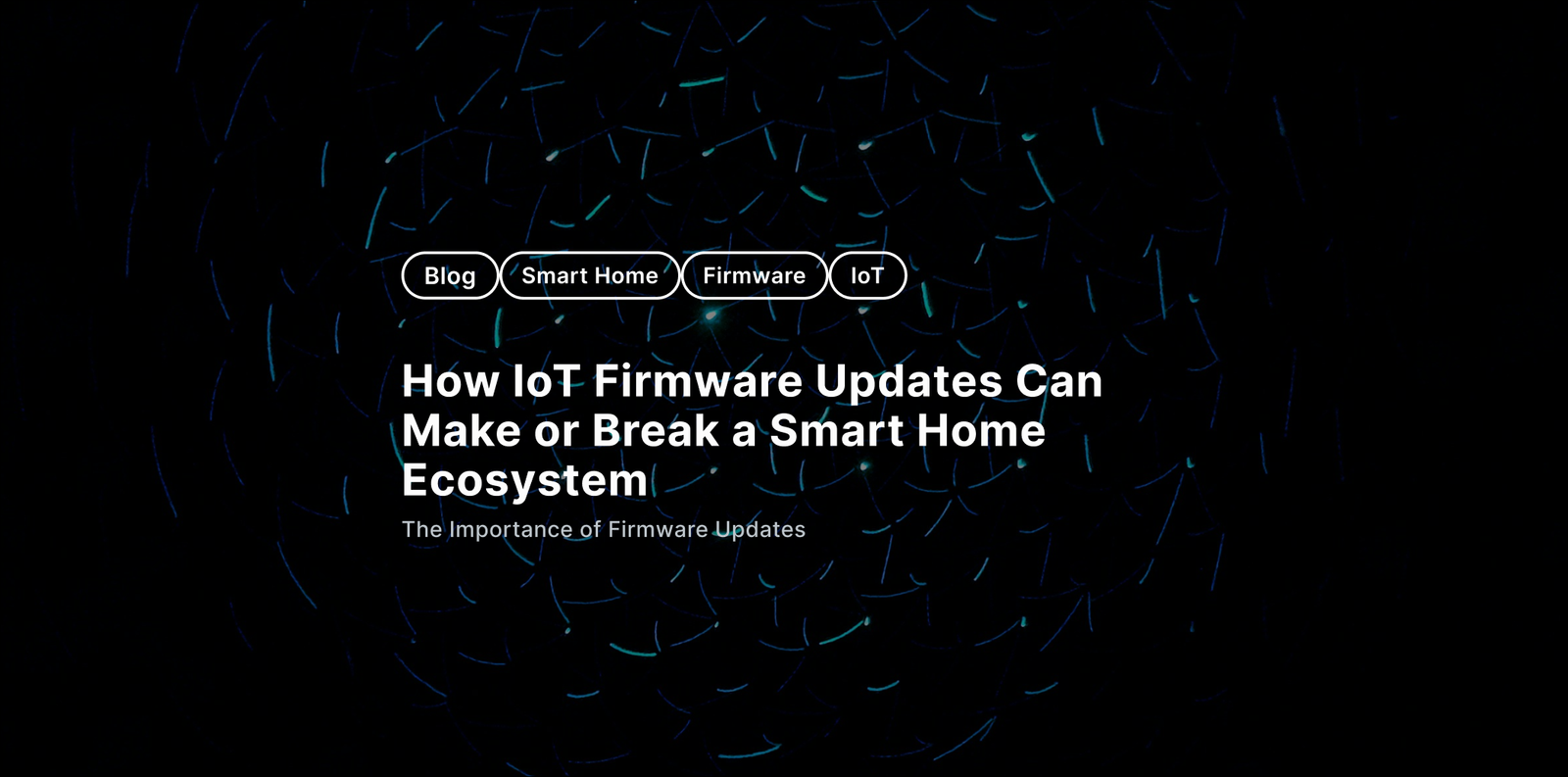✆ + 1-646-235-9076 ⏱ Mon - Fri: 24h/day
How IoT Firmware Updates Can Make or Break a Smart Home Ecosystem


Introduction
Smart home devices are no longer a luxury – they are a part of everyday life. From thermostats to doorbells and voice assistants, these devices shape how we live, work, and interact with our environment. But what keeps these devices secure, functional, and future-ready? The answer lies in something often overlooked: firmware updates.
Whether you’re an embedded systems developer or a tech-savvy homeowner, understanding the role of firmware updates is critical. In this article, we’ll explore why timely updates are vital for smart home devices, the risks of neglecting them, and what developers and consumers can do to ensure a safer, smarter home.
Figure 1. OTA update diagram
Why Firmware Updates Matter
Firmware is the low-level software embedded in hardware that controls its operations. In smart home devices, firmware acts as the “operating system,” ensuring the device functions properly and securely.
Regular updates to firmware can:
- Fix security vulnerabilities
- Add new features and integrations
- Improve performance and stability
- Ensure compatibility with evolving standards like Matter
The Risks of Ignoring Firmware Updates
Neglecting firmware updates can expose devices to:
- Cybersecurity threats: Unpatched devices can become entry points for hackers to access home networks.
- Device malfunctions: Bugs left unresolved in older firmware may cause instability or data loss.
- Incompatibility: New ecosystem standards or integrations may not work with outdated firmware.
- Loss of trust: Consumers may abandon brands that fail to maintain software updates.
Real-World Examples
- Mirai Botnet (2016): Exploited unpatched IoT devices to launch massive DDoS attacks.
- Smart door lock recalls: Some manufacturers had to recall products due to vulnerabilities that could have been patched remotely.
These examples highlight how poor firmware maintenance can impact both user safety and a company’s reputation.
Best Practices for Developers
As embedded developers, our role in the firmware lifecycle is crucial. Here are some key practices:
1. Design for OTA (Over-the-Air) Updates
Ensure your device can receive and install updates remotely without user intervention.
2. Use Secure Bootloaders
Protect the update process with encryption and authentication to prevent tampering.
3. Minimize Downtime
Updates should be fast and reliable, with rollback mechanisms in case of failure.
4. Notify and Educate Users
Make sure end users know when updates occur and why they matter.
5. Build Update Pipelines
Automate testing, signing, and distribution of firmware to ensure quality and traceability.
What Consumers Should Know
Consumers don’t need to be engineers, but they do need to:
- Enable auto-updates where possible
- Register devices with manufacturers to receive security alerts
- Check app permissions and update notifications regularly
Future of Firmware Updates
The rise of unified platforms like Matter and the demand for secure, autonomous homes make firmware updates more essential than ever. Emerging trends include:
- AI-assisted anomaly detection for identifying needed updates
- Decentralized update systems using blockchain
- Seamless multi-device coordination for simultaneous, secure firmware upgrades
Conclusion
Firmware updates are the silent guardians of smart home devices. For developers, they are a technical responsibility. For consumers, they are a digital hygiene practice. Together, they form the foundation of a secure, reliable, and future-proof smart home.
👉 Developers: Invest in secure, OTA-capable firmware systems and build user-friendly update experiences.
👉 Consumers: Stay informed, enable auto-updates, and choose brands committed to long-term support.
A smarter home starts with smarter updates. Don’t ignore the firmware—it’s the brain behind your smart home experience.